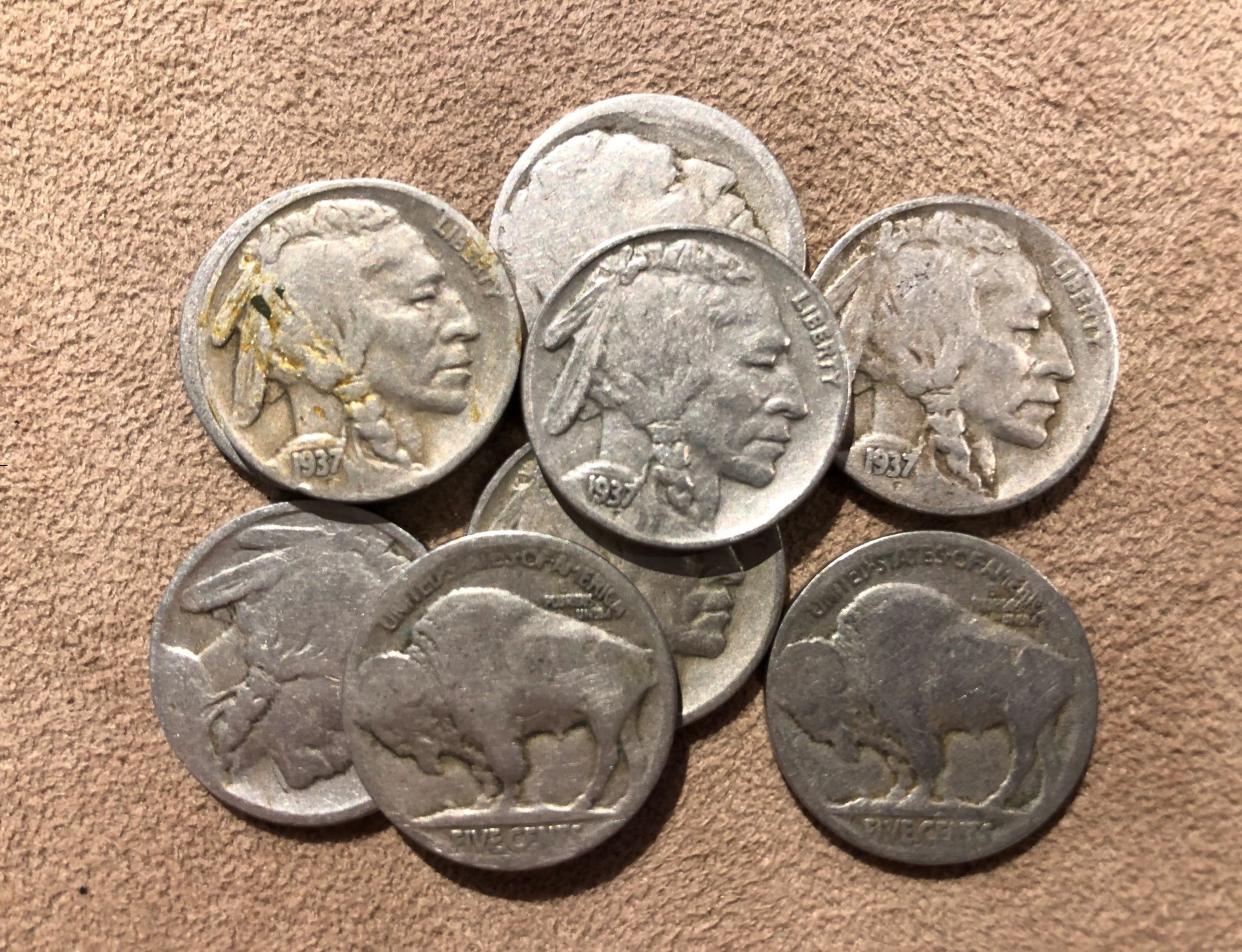Antiques: Here's why Buffalo nickels were the great American coin

When was the last time you really looked at the coins in your pocket? They come and go nearly every day, but you barely give them a glance.
I know, I know: Coins aren't worth what they use to be so maybe that's all the attention they're entitled to. And other than a few less-than-successful introductions over the years — e.g., the Eisenhower, Susan B. Anthony and Sacagewa dollar coins — many of the coins rattling our pockets have looked the same for decades.
Still, part of it may be that today's U.S. coins aren't nearly as good looking as some of their predecessors. So, let's dial back the years and look at one of the best-looking coins of all time: the Buffalo nickel.
Officially known as the Indian Head Nickel, the Buffalo nickel enjoyed a 25-year run from 1913 to 1938. It featured a classic Native American visage on one side and a side view of a hefty American bison on the other. Designed the year before its introduction by sculptor James Fraser, the idea was to improve the looks of U.S. coinage following the introduction of the Lincoln copper penny in 1909. The coin was minted in Denver, Philadelphia and San Francisco and consisted of 75% copper and 25% nickel. As it turned out, it was a hit in most circles, but not all.
Though most Americans view the Indian wars and the winning of the west as 19th century events, the fact is that historians today view the conflict as not having ended until 1924. The last official battle, known as the Battle of Bear Valley, took place in southern Arizona in 1918, and peace was not universally declared for another six years.
As for the sculptor Fraser, he grew up in South Dakota and was well aware of the Little Bighorn and Wounded Knee battlefields nearby. His sympathies towards the native tribes were manifested in 1915 with the creation of his iconic "The End of the Trail" sculpture showing a bowed warrior slumped over an exhausted horse. That image remains among the most famous and powerful of all time.
As for the Buffalo nickel, it proved to be more popular with the citizenry than it was with the U.S. Mint. The soft lines of the imagery proved difficult to reproduce and were subject to excessive wear. In particular, the date at the lower left of the coin's front often wore away completely.
After an obligatory 25-year run, the Mint discontinued the Buffalo nickel in favor of the Jefferson nickel, and the latter remains in circulation to this day. Despite the fact that more than a billion Buffalo nickels were minted during their quarter-century run, you almost never see them in circulation today. The many collectors who are out there will pay about $.50 for an average example and up to $1,500 or even more for a 1921-S in mint condition. There's just something special about them.
So, if you still have Dad's coin box — or better yet, Grandpa's — you might rummage through to see if any Buffalo nickels have survived the years. Considering the Depression era in which they circulated, it's hard not to imagine what they might have purchased during those hard years. Perhaps a cup of coffee? A chocolate bar? A phone call? A nickel in 1937 had the buying power of about $1.10 today, and any youngster with a few plug nickels in his pocket during those days was a lucky fella indeed. Who knows? Maybe you were one of those kids.
So, if you need to relive those days, come on by the gallery and we'll put one in your hands. It just might take you back.
Mike Rivkin and his wife, Linda, are long-time residents of Rancho Mirage. For many years, he was an award-winning catalogue publisher and has authored seven books, along with countless articles. Now, he's the owner of Antique Galleries of Palm Springs. His antiques column appears Sundays in The Desert Sun. Want to send Mike a question about antiques? Drop him a line at info@silverfishpress.com.
This article originally appeared on Palm Springs Desert Sun: Antiques: Here's why Buffalo nickels were the great American coin

